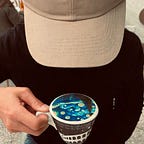The Slow Lane of Innovation
The content discussed in this 2-part article was presented at Coca-Cola Amatil (CCA) head office in Auckland in conjunction with the 2017 Sir Peter Blake Trust Leadership Week in New Zealand. The second part is The 3 Pillars of Breakthrough Innovation.
We live in a world now where everyone expects everyone else and everything to be fast. From fast internet connections and fast moving queues to fast speed to market and fast turnaround on investment. We want fast to be faster. In the context of product innovation in business, everyone knows that not moving fast enough spells death. However, the rate at which we innovate on existing products — for instance by pushing out new features faster — is just one side of the innovation coin. It is important to appreciate that, sometimes, in order to create good and wholesome things, patience is required.
The analogy that I like to use is that product innovation is a 2-lane affair. The lanes represent the two primary types of innovation — incremental and the non-incremental ones. They both have different roles to play to sustain and advance a business. There is life on the fast lane, where improvements to different aspects of existing products or introduction of new features takes place. Speed is of the essence here or the products risk falling behind. Most companies already have proper processes, resourcing and other support in place to speed through the fast lane. The innovation that happens on this lane is referred to as incremental or sustaining.
There are many examples of this type of innovation across a range of industries, from FMCG businesses producing physical goods to online media or technology companies offering search services to connect customers and providers. An example in the consumer goods space is the continual extension to the line of soft drinks bearing the Coca-Cola brand. Together, products such as Vanilla Coke and Coke No Sugar have enabled a 130-year old brand to tap into emerging trends and bring something new to its existing customers over the years. In the case of SEEK, its search products undergo continuous improvement following the approach described in my other blog post to make the results that they produce for the users increasingly more relevant.
The reality is you can only go so far by being faster, cheaper or tastier before you hit the end of the runway. In other words, innovation beyond the incremental is required for companies to remain competitive over the long run. It is definitely the case of disrupt or be disrupted. This is when the second lane comes in, for innovation beyond the incremental ones. This type of innovation can range from solving an existing problem differently, to offering solutions to problems that users do not even know exist. The different terms used to describe this type of innovation include breakthrough, radical and disruptive. Some of these labels have more nuanced usage, as in the case of disruptive innovation in the book Innovator’s Dilemma.
More often than not, the initiatives travelling on the slow lane are few and far between. According to some sources, around 70% of innovation is incremental in nature. As for the rest on the slow lane, we hear companies lament about their inability to translate the more ‘absurd’ ideas into the next big thing that can propel them ahead of competition. The common excuses are around the distraction of day-to-day business activities which take attention, time and resources away from this type of innovation.
The fact that companies claim they struggle to innovate beyond incremental using the existing setup and processes is an indicator that we need something more. But the question is what? In the next part of the article titled “The 3 Pillars of Breakthrough Innovation”, we cover the 3 critical pillars to foster and sustain breakthrough innovation through the lens of my experiences across a range of roles.
